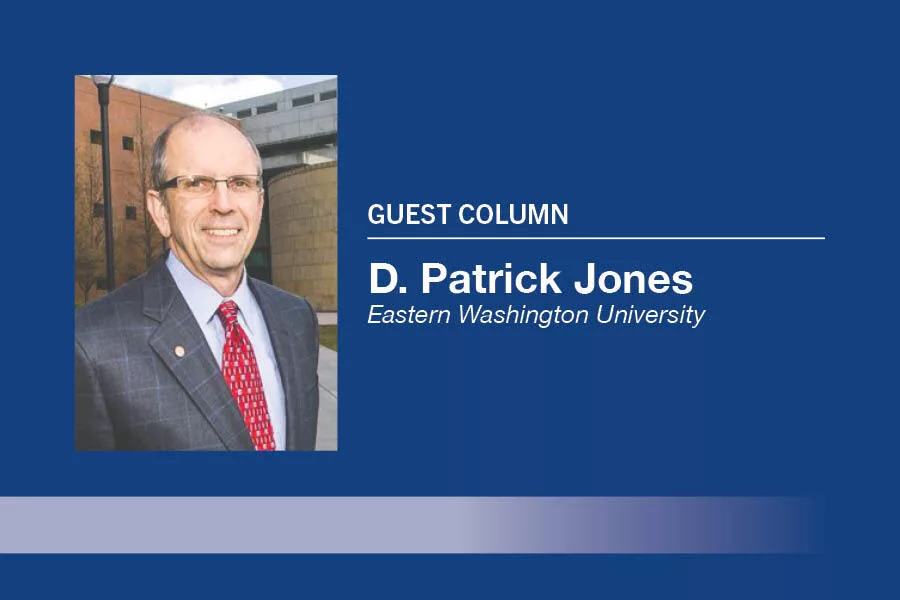
Home » Tri-Cities faces challenge of growing its own engineers
Benton-Franklin Trends
Tri-Cities faces challenge of growing its own engineers

January 12, 2024
Many Tri-Cities Area Journal of Business readers might think that engineers in the greater Tri-Cities are as common as tumbleweeds. That conventional wisdom is generally correct. There are few communities throughout the state that require their talents as much as the local economy. But engineers’ ubiquity might not be as high as some assume.
It certainly is true that Benton and Franklin counties lay claim to a large number of these highly-trained professionals. According to the most recent survey from the Washington Department of Employment Security (ESD), the most recent (2019-22) average from the “Occupation & Wage Survey” counted about 2,700 engineers in the two counties.
High concentration
That sum amounted to 2.3% of the workforce. The analogous share in the entire state was 1.6%. Consequently, the concentration here is higher than statewide. But with a “location quotient” (ratio of the percentages) of 1.4, the concentration isn’t off the charts. Any value greater than 1.0 is considered to show a concentration.

Tri-City’s engineering workforce (2019-22)
| Source: Employment Security DepartmentA mix of specialties
And there are some surprises in the mix of specialties. Civil engineers here make up 23% of all engineers, the largest specialty. But statewide, they constitute 27% of the total. In second place locally are mechanical engineers, with a four-year average total of 635. As a share, this translates to 24%, far higher than the 16% observed statewide.
It should come as no surprise that aerospace engineers are found here at a much lower frequency (1% of the total) than statewide (7%). The two counties simply do not have much of an aerospace cluster. Nor should it surprise that industrial engineers are not too common in the greater Tri-Cities, as manufacturing, outside of food processing, doesn’t have deep roots here.
Statewide, industrial engineers make up the fourth-largest specialty, or 13% of the engineer workforce. Here, the percentage is less than half of that share, at 5%.
Backbone of advanced industries
Why should we care? From an economic development perspective, engineers, along with their associated technicians, as well as scientists and computer specialists, make up the backbone of advanced industries. The products, whether goods or services, of these industries usually embody high value added. As a consequence, their wages and salaries run much higher than average.
From the most recent survey, the average annual wage of local engineers ranged from $95,000 for industrial engineers to $146,000 for nuclear engineers. The overall weighted average? Slightly over $112,000 annually.
Growing need for engineers
Economies change relatively slowly. In some cases, that pace is disappointing. In the case of engineering’s presence in the greater Tri-Cities, the pace is a positive: Engineers here are not going away anytime soon. ESD economists expect the number of engineers over the near term to expand, albeit slowly.
Between 2021-26, the most recent occupational forecast of the total engineer count in the two counties calls for a growth of 4%. The rate is about half as fast as the projected growth of the overall number employed, but positive nonetheless.
Even with a projected modest rate of growth, filling the number of annual expected job openings in the immediate future will be daunting. From mid-2022 to next summer, ESD has forecasted an annual number of openings of all engineering disciplines to be about 330. The major reason for the high number? Retirements and engineers leaving the field for another occupation.
How will these positions be filled? Several Eastern Washington universities issue engineering degrees: Washington State University Tri-Cities, WSU Pullman, Eastern Washington and Gonzaga. Stepping across state lines, we see the University of Idaho offering a strong program. But the total annual degree “production” from Inland Northwest higher education doesn’t come close to 330.
Of course, talent can be imported. That has been and undoubtedly will be the case. But wouldn’t it bring a smile to parents, educators and the students themselves if our region could grow more of its own?
D. Patrick Jones is the executive director for Eastern Washington University’s Institute for Public Policy & Economic Analysis. Benton-Franklin Trends, the institute’s project, uses local, state and federal data to measure the local economic, educational and civic life of Benton and Franklin counties.
Latest News Opinion Architecture & Engineering Economic Outlook
KEYWORDS January 2024
Related Articles





